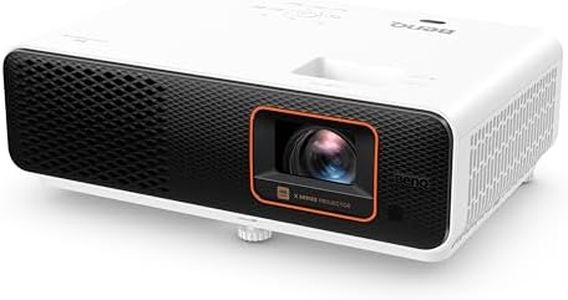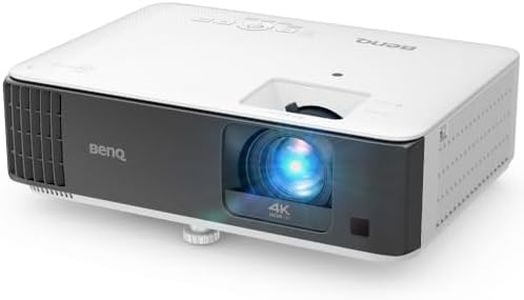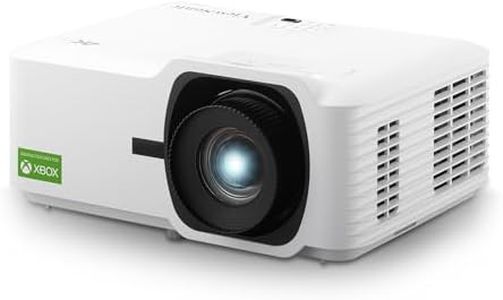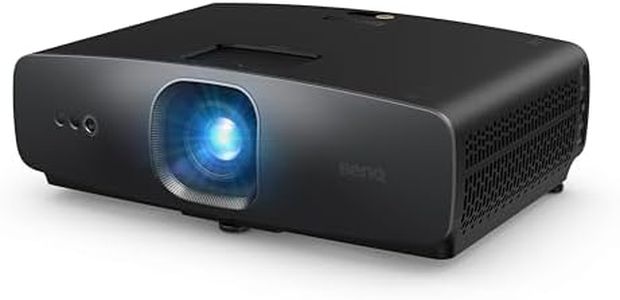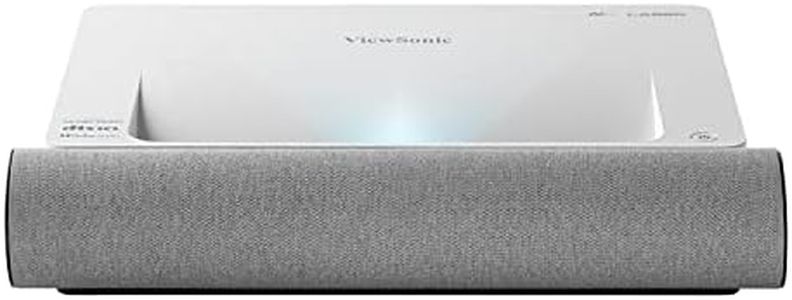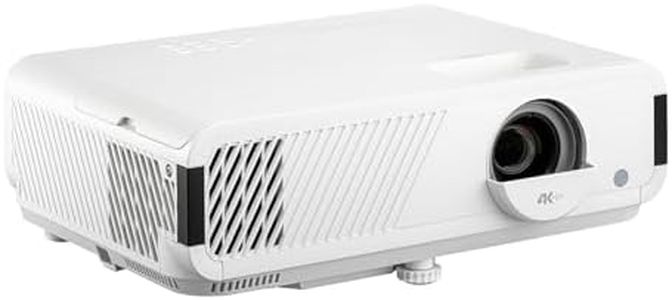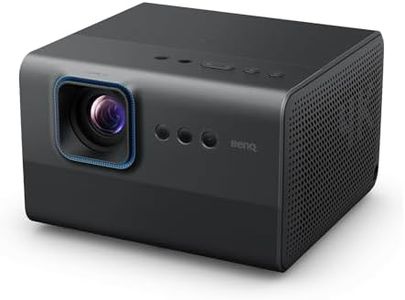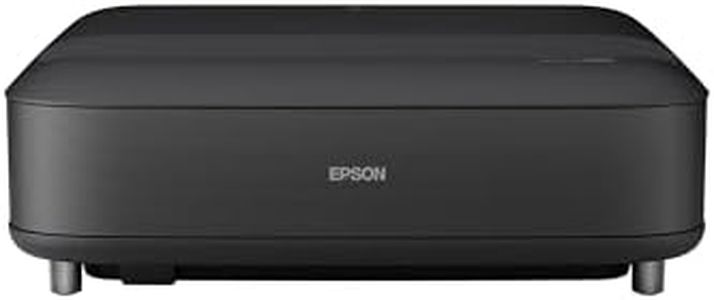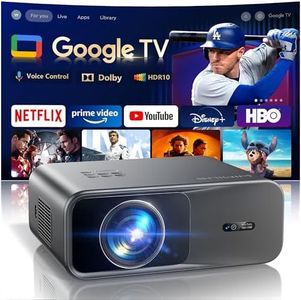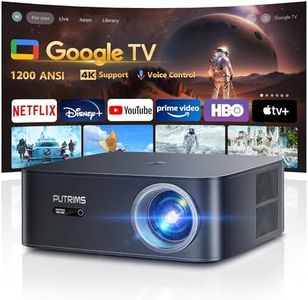We Use CookiesWe use cookies to enhance the security, performance,
functionality and for analytical and promotional activities. By continuing to browse this site you
are agreeing to our privacy policy
10 Best 4K Projectors
From leading brands and best sellers available on the web.Buying Guide for the Best 4K Projectors
Choosing a 4K projector can open up a world of stunning visuals for home theater, gaming, or business presentations. Since projectors are all about creating an immersive viewing experience, you'll want to focus on factors like image clarity, brightness, and ease of use. To find the best 4K projector for your needs, think about your primary use (such as movies, gaming, or presentations), the size of your viewing area, and where and how you'll use the projector. Balancing these needs with an understanding of key specifications will guide you toward the perfect fit.ResolutionResolution refers to the number of pixels that make up the image on the screen. In 4K projectors, this usually means 3840 x 2160 pixels, which provides a very sharp and highly detailed picture. Choosing a true 4K projector is important if you desire ultra-crisp images, especially on large screens. Some projectors use 'pixel-shifting' to mimic 4K; these can look very similar to native 4K in most situations, but if you’re after the absolute highest clarity for movies or high-res content, native 4K is preferable. If your content is mostly HD or from less detailed sources, pixel-shifted 4K can be an excellent value.
Brightness (Lumens)Brightness, measured in lumens, tells you how much light the projector puts out. This is crucial because it determines how well the projector can handle ambient light in your viewing environment. Lower brightness (around 1500–2000 lumens) is great for dedicated dark home theaters, medium levels (2000–3000 lumens) suit living rooms or spaces with some daylight, while high brightness (over 3000 lumens) is ideal for large spaces or rooms that can't be fully darkened. Consider where you’ll use the projector; dimmer rooms allow for lower brightness, while brighter spaces need more lumens for a visible, vibrant image.
Contrast RatioContrast ratio describes the difference between the darkest black and the brightest white a projector can display. A higher contrast ratio means deeper blacks and more vivid colors, which makes the image look more lifelike and adds depth, especially noticeable in movies with lots of shadows or dark scenes. Ratios can range from a few thousand to hundreds of thousands to one. If you love watching films or shows with dramatic visuals, look for higher contrast ratios. For presentations or well-lit spaces, contrast matters less.
Throw RatioThrow ratio tells you how much distance is required between the projector and the screen to display a certain image size. A standard throw is suited to large rooms where the projector is far from the screen, while a short throw is for closer placements, making it ideal for smaller spaces. Ultra-short throw projectors can sit just inches from the wall. Think about your room size and arrangement—for smaller or flexible rooms, a short or ultra-short throw projector makes installation and setup easier.
Input LagInput lag is the delay between sending a signal to the projector and seeing it displayed. This is especially important for gaming or interactive presentations. A lower input lag (under 30 milliseconds) is best for fast-paced gaming where every moment counts. For movie or TV viewing, a higher input lag isn’t noticeable. If your main use is watching films, this spec can be deprioritized.
Lamp Life/Light SourceProjectors use different light sources: traditional lamps, LEDs, or lasers. Lamp life refers to how long the projector’s light source lasts before needing replacement. Traditional lamps may last 2,000–5,000 hours, LEDs can go up to 20,000 hours, and lasers often last 20,000 hours or more. If you plan to use the projector frequently, or want low maintenance, consider an LED or laser model for longer life and less upkeep. Occasional users may find lamp-based projectors sufficient.
ConnectivityConnectivity options include HDMI, USB, wireless capabilities, and audio outputs. The right connections ensure you can easily hook up all your devices, like streaming players, gaming consoles, or speakers. If you want a simple, plug-and-play experience or plan to connect multiple devices, look for a projector with multiple HDMI ports and wireless casting options. For permanent setups, built-in audio may suffice, but home theater users often prefer devices with audio outputs for enhanced sound systems.

